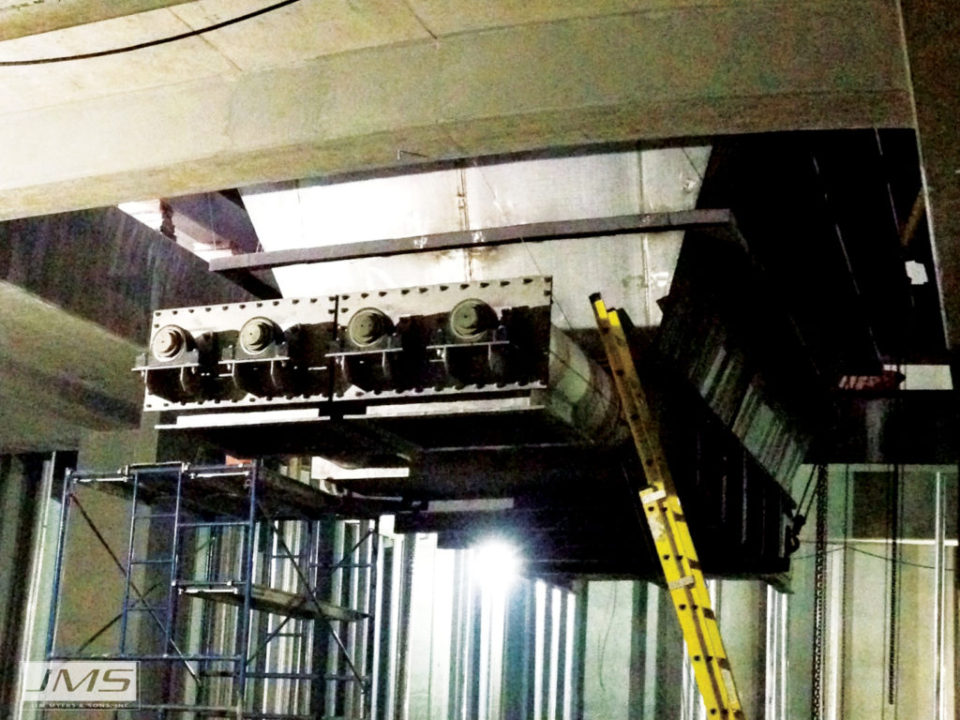JMS had the opportunity to contribute to the largest thermal hydrolysis plant in the world, supplying a JMS Bio-HANDLING (Material Handling Systems) biosolids receiving station equipped with metered-end discharge. Turning a waste problem into financial opportunity, while reducing their carbon footprint was a worthwhile goal for this huge project. To achieve the control needed for the thermal hydrolysis process, bins with twelve hour holding capacity were needed.


JMS 316L stainless steel cake bins with load cells and live bottom were part of the Main Process Train fed by dewatering centrifuges. Diverting slide gates above the cake bins close to divert centrifuge liquids to the drain, or open to feed solids to the cake bin storage. JMS live bottom feeders mounted on the bottom of each cake bin provide a means of metering sludge to the thermal processing pumps. One feeder screw feeds either pump.


JMS made special accommodations in the cake bins, live bottom feeders, and slide gate valves for elevated hydraulic pressures within the process. Each component was hydro tested to withstand 12 psi and special gaskets were used in the final field welding and construction process. With the great success of this facility, it has become the prime reference for other plants considering the Thermal Hydrolysis process. To learn more about the project for this plant read this TPO Article today.

